ORIGINAL PUBLICATION DATE: 12/15/2008
When I visit the Lanphere Dunes I always feel like I have taken a trip to another part of the world. Hidden and relatively unknown, the redwood forest — as a local destination — can overshadow this unique ecosystem. The dune complex is surrounded by temperate coniferous rainforest, the Pacific Ocean, and Humboldt Bay — ecologically trapping and therefore fostering, for millenia, isolation of space and time. Species that survive here define their own vegetation type; from the common to the unexpected, to the seemingly out of place there is always something new to appreciate on a trip to the dunes. Although a visit requires a guide or written letter of permission, hikes are offered monthly — check the Humboldt Bay National Wildlife Refuge webpage for information regarding access.
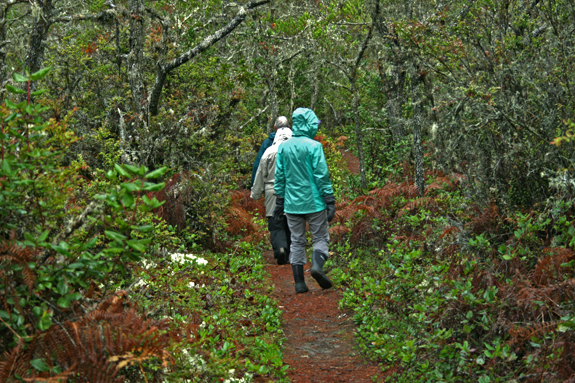
Today, we were lucky to have a guide. Allison and I joined Dr. John Sawyer and his wife Jane on a walk through the dunes. John was a key member of a group of conservationist with a vision — that originally secured preservation for this area nearly 40 years ago. Since the establishment of the preserve, it has changed hands from the original steward, the Nature Conservancy, to the Fish and Wildlife Service who manages it today — with a mostly hands off approach, except toward the removal of non-native species, the place has maintained a primordial feel.
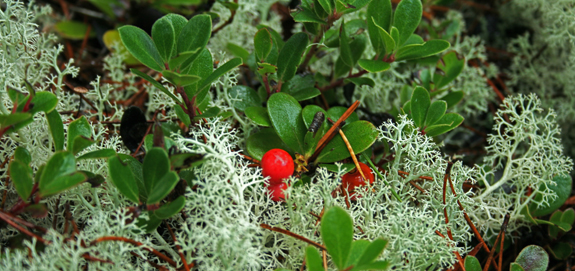
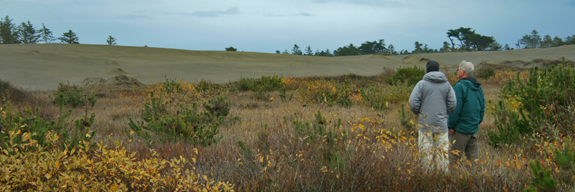
Lanphere dunes foster an amazing range of biota. From rare plants to common plants to plants that are far from their more common range — expect the unexpected when venturing into the dunes. Besides some terrific conifer specimens, including a subspecies of lodgepole pine called beach pine (Pinus contorta spp. contorta), the most intriguing inhabitants in the dunes are reindeer lichen (Cladonia rangiferina) and bear berry manzanita (Arcotstaphylos uva-ursi). The lichen is a common component of northern boreal forest floors where it grows circumpolar in the northern hemisphere — the Lanphere Dune population is a relict from a much colder time. Bear berry, or kinnikinnick, is a beautiful, prostrate manzanita that is found elsewhere in California in a few drainages on the east side of the High Sierra Nevada — dunes and high mountains, quite a contrast in habitats. One species that caught Allison’s eye was a population of twin flower (Linnea borealis); a plant we have grown to love on our summer forays into the Klamath Mountain high country. Dr. Sawyer informed us that the population Allison spotted was the only one discovered one in the dune complex — another relict of an epoch gone by.
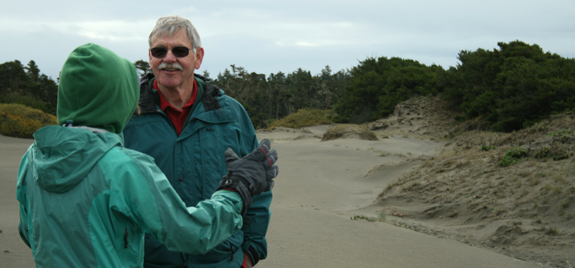
The dynamic ecosystems of Lanphere Dunes makes for an exceptional hike. This is a place that embraces change, while at the same time offers refuge to species that were once common in the region during climatically different times. It is surely one of the best examples of a coastal dune ecosystem on the Pacific Coast.
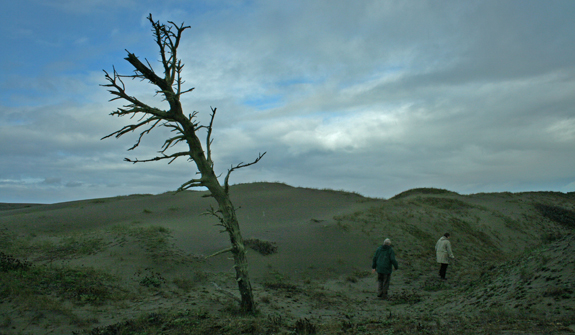
COMMENT:
AUTHOR: J Loomis
DATE: 5/2/2009 3:38:42 AM
Just returned from CA last Sunday. I was unable to tour the Lamphere Dunes not knowing it required a permit. Went to the nearby “Friends of the Dunes” Stamp D. area and was fortunate to find a single Wallflower….or what I thought was one. Anyone have any pictures?